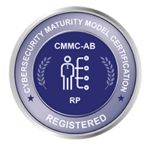The holidays have come and gone ! And, while many of us were using the time to take a much needed break from work and to spend more time with our loved ones, hackers were doing just the opposite and gearing up for coming year. We’ve all said the phrase “new year, new me” but threat actors take this meaning to a whole new level. Each year mobile-based cyberattacks advance and become more sophisticated. Whether it’s the evolution of established threats or the development of new tactics, techniques, or attack vectors, one thing is for certain: we need to buckle up and brace for impact.
Don’t know where to start? Think of it like a New Year’s Resolution (and yes, you must stick to this one!) We can help you prioritize your efforts in 2022 to increase your organization’s mobile security posture? Our team has put together a guide on our mobile threat predictions for 2022 to outline where organizations should put their focus.
Spyware
We truly witnessed the emergence of spyware this year with the proliferation of the Pegasus spyware. The reason why the Pegasus is of such concern is due to the fact that it has zero-click distribution capabilities. That means users don’t have to open an attachment, link or any other action to fall victim. This tactic will likely be used more frequently in 2022. We anticipate that the Pegasus spyware will continue to plague more and more victims and we’ll likely even see the emergence of new spyware variants as other cybercriminal groups hop on this bandwagon.
How can this happen? It simply comes down to weaknesses in your mobile device operating systems. Hackers are able to easily search for and identify vulnerabilities within an OS and deploy spyware. There’s a dangerous over-reliance on mobile operating system’s ability to provide robust security. This can be attributed to our next prediction as well.
Banking Trojans
So now that we know that our mobile operating systems are actually not that secure, what are the other concerns? The scary truth is there is an overwhelming number of threats attributed to mobile malware. Unfortunately, mobile devices have a lot of attack vectors that are very easy for hackers to prey on. And, since most individuals have their phones on them at all times – using them throughout the day for all types of work and personal activities – the opportunities to attack are boundless for the cyber criminals interested in your or your employer’s data . Mobile malware can be disseminated through SMS, malicious apps and even through phone calls. In 2022 though, we’re most concerned about banking trojans.
Banking trojans are a mobile malware that has grown in popularity. It occurs when threat actors target mobile programs associated with financial institutions, such as mobile banking applications. We know that most threat actors are financially motivated and these types of attacks help them gain access to confidential, financial information, such as bank account numbers or payment card details. We’ve already witnessed an uptick: Recent research found 300,000 banking trojan infections in the Android Google play store over the past 4 months.
Bring Your Own Device (BYOD)
We’re nearing the two year anniversary of the COVID-19 pandemic and it doesn’t seem to be slowing down. New variants are emerging, currently Omicron, and cases are yet again rising. Many organizations that planned to return to the office in 2022 are delaying and those who returned to in-office settings are sending their employees back home. One could assume that 2 years in a global pandemic would be enough time for organizations to boost their security in relation to remote working. But, unfortunately, many organizations still struggle with this.
Not only is remote work still so prevalent but we’re also in the midst of a “Great Resignation” and the many new employees who are replacing the previous are being onboarded remotely. To make this easier, organizations are relying more heavily on BYOD policies, which also come with many security concerns. BYOD policies are phenomenal for increasing productivity and decreasing costs in these environments, but when not secured correctly, they can drastically increase attack landscapes. The biggest issue is that many traditional BYOD security solutions infringe upon employees’ privacy and come with a variety of restrictions that defeat the purpose of BYOD in the first place. Organizations are then faced with the struggle of choosing between security, productivity and privacy.
Yes, this can seem overwhelming. At first, one might assume that in order to protect their organization from these threats they will have to make a significant investment in multiple mobile security platforms and solutions. With SyncDog, all critical aspects of an effective mobile security solution are available in a holistic platform available through a single download and centrally managed in a single console. The SyncDog platform provides Mobile Device Management (MDM), Mobile Threat Defense (MTD) and Enterprise Mobility Management (EMM) capabilities. In addition, the platform comes with a Trusted Mobile Workspace that isolates and secures all work related emails, contacts, calendars, notes, tasks, documents, images and even intranet access on a smartphone or tablet (iOS and Android™) in a secure, encrypted Containerized area. You can have peace of mind knowing that employees can install programs, save files, access data and use applications just as they normally would, knowing that corporate data is completely secure. To learn more about SyncDog’s Secure.Systems, request a demo today!
